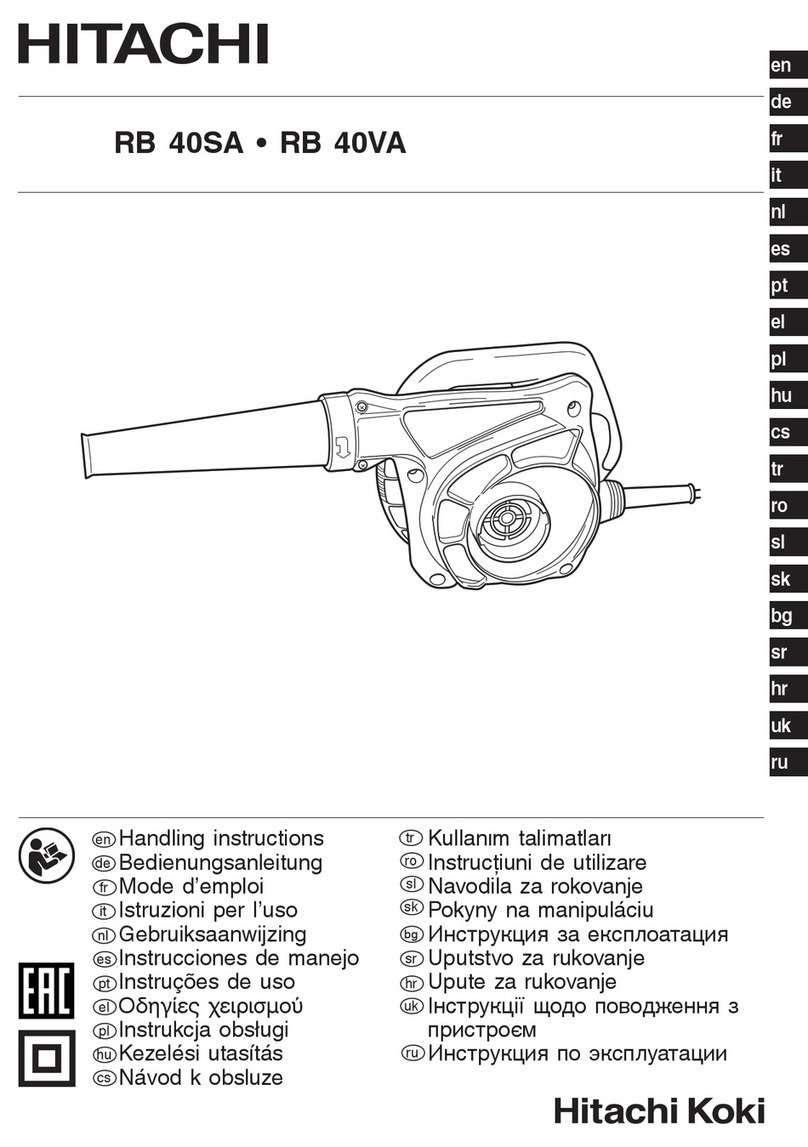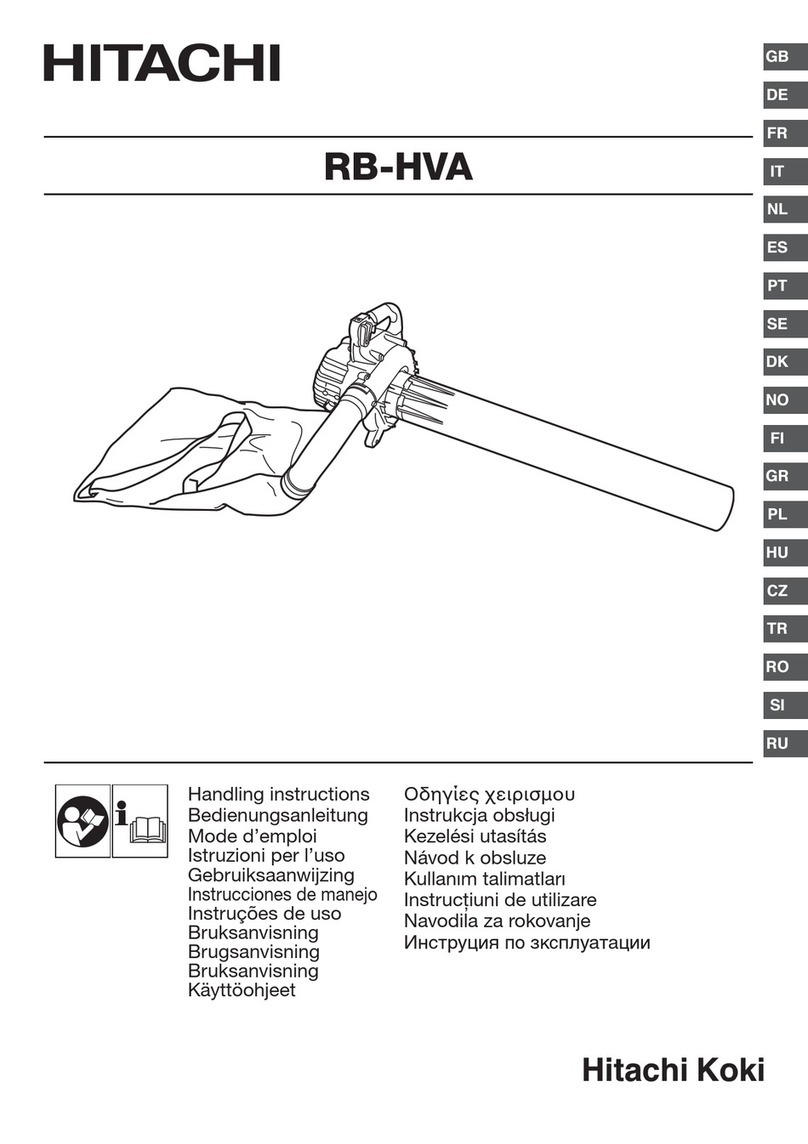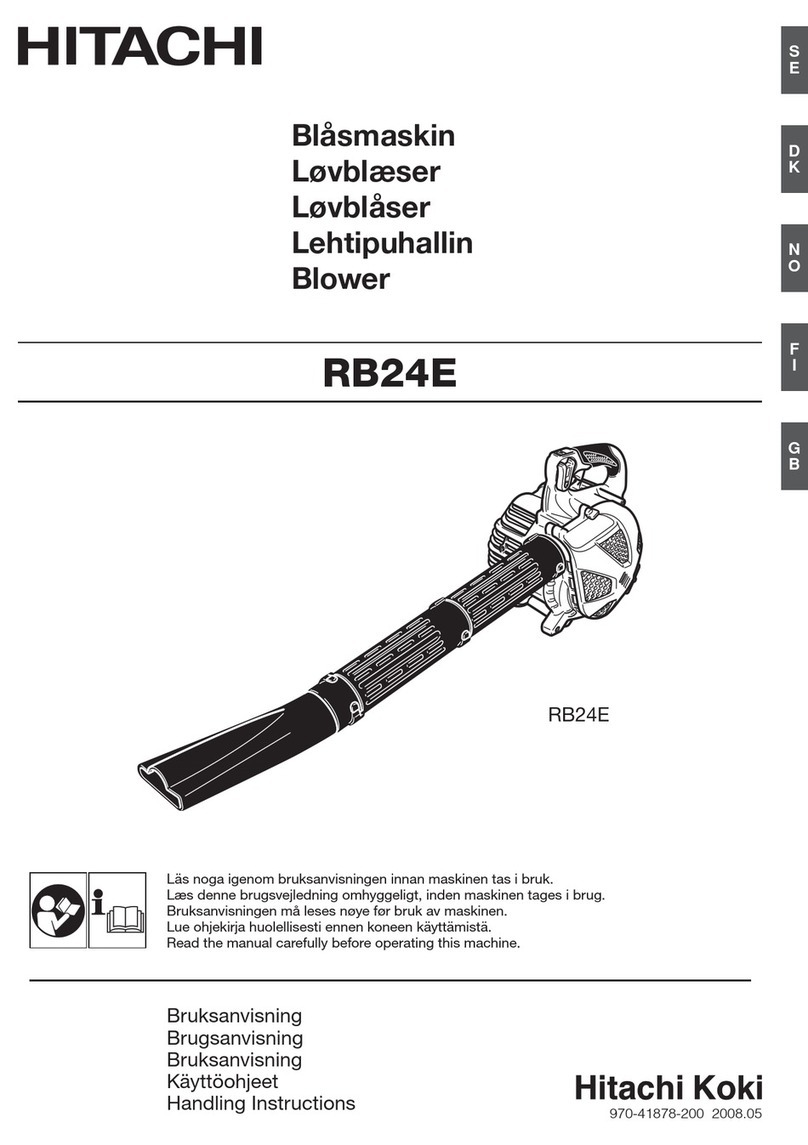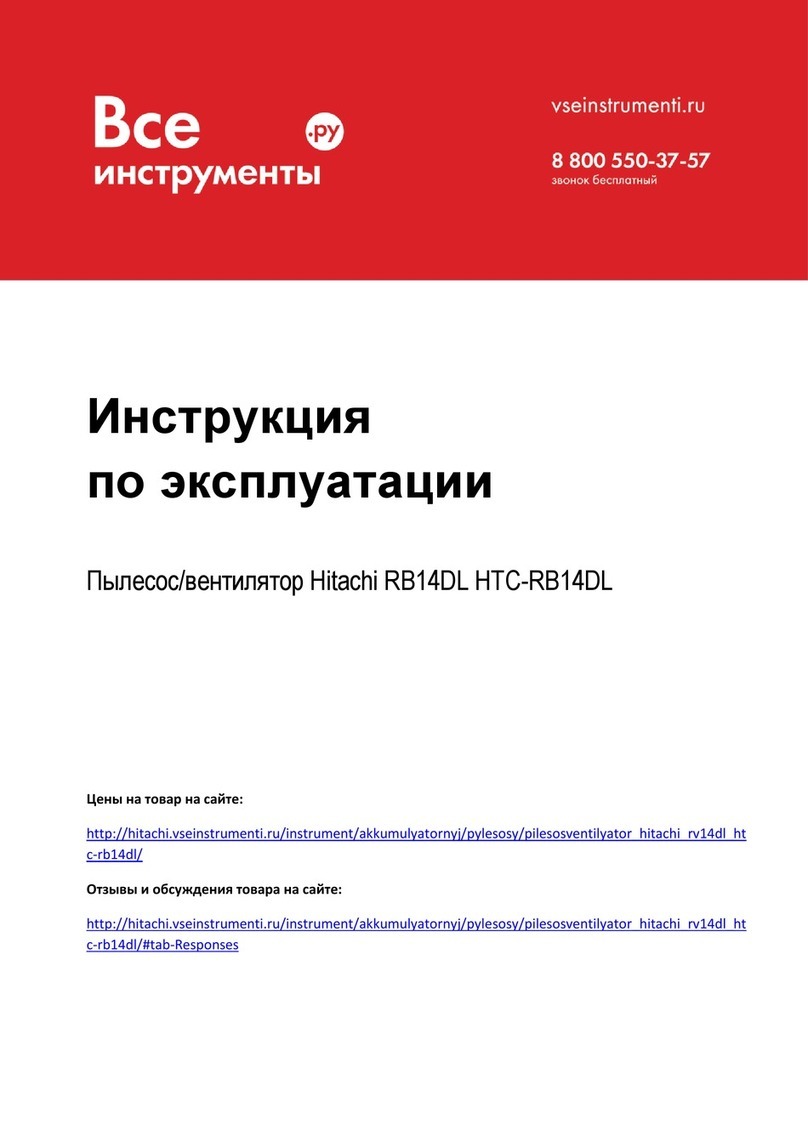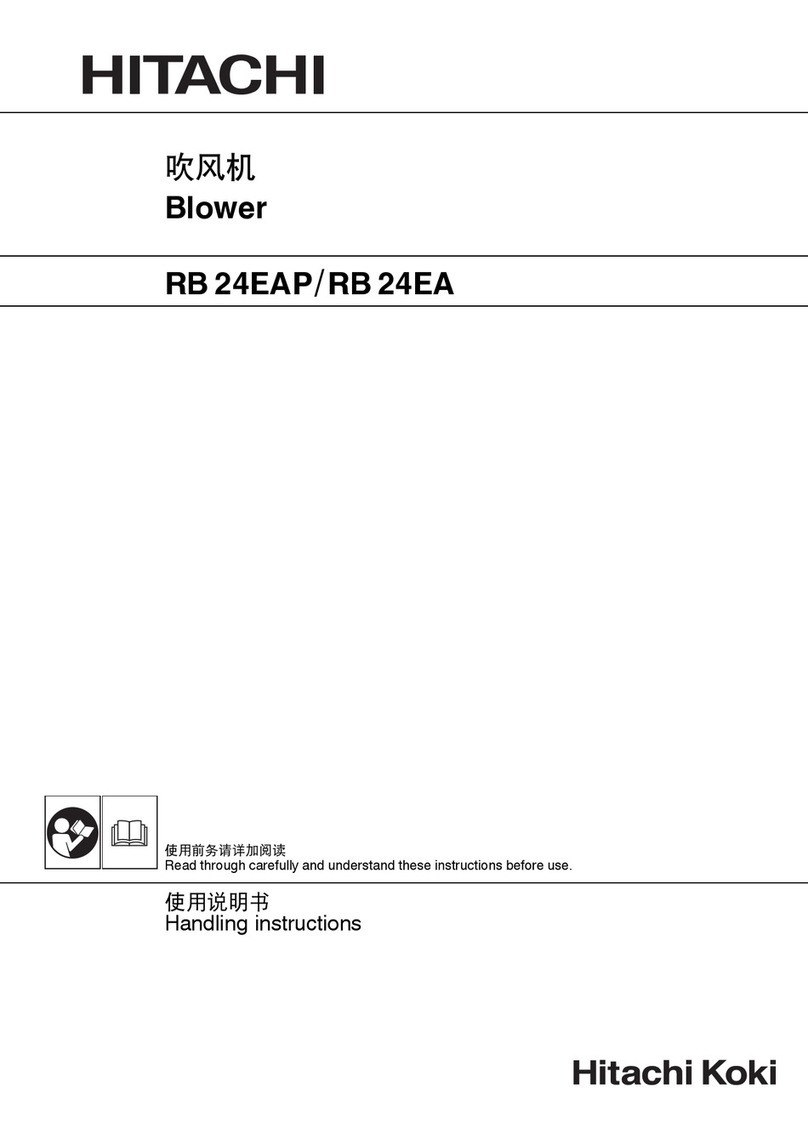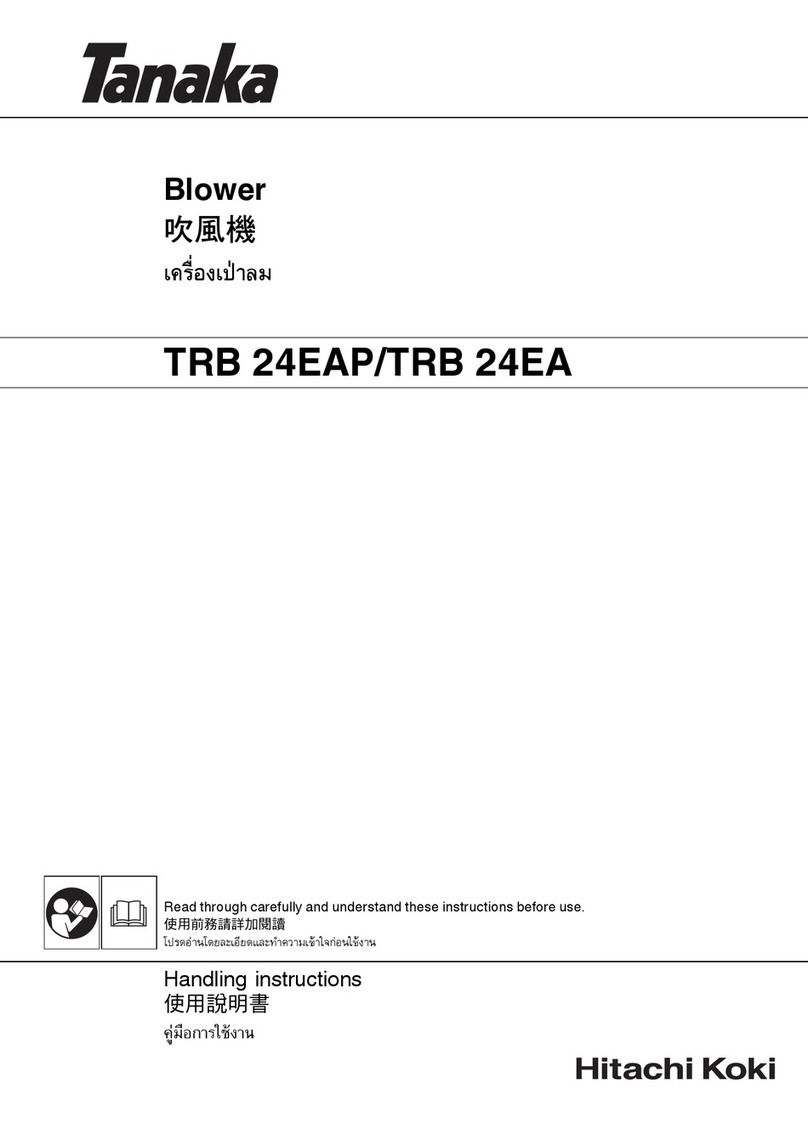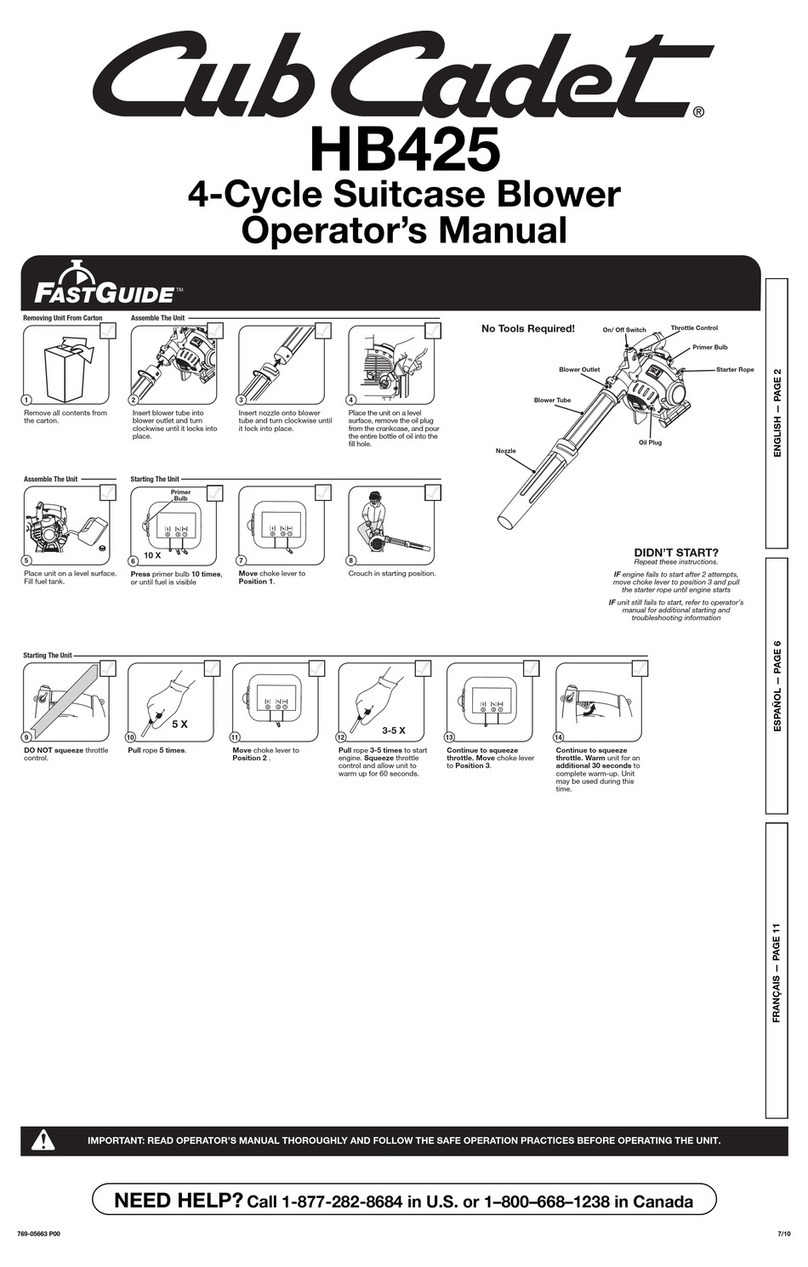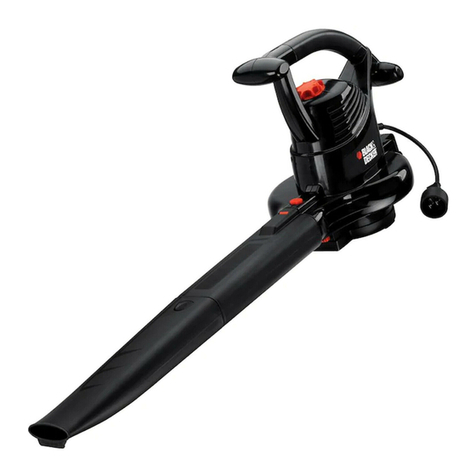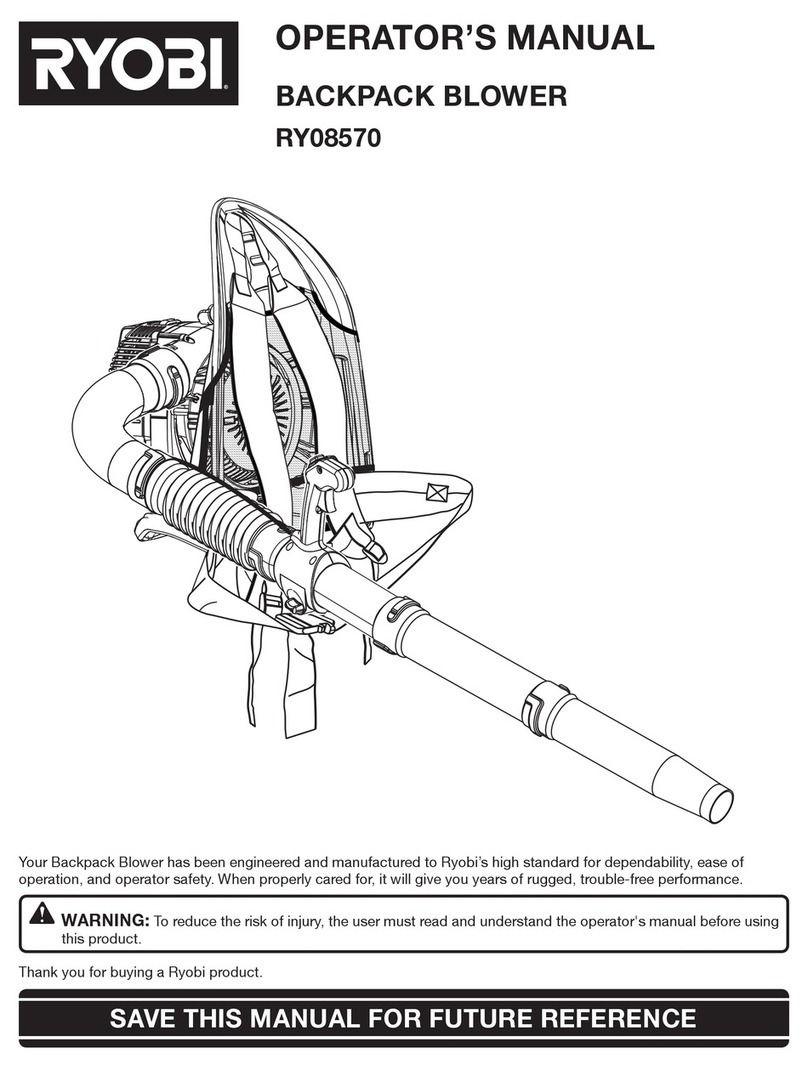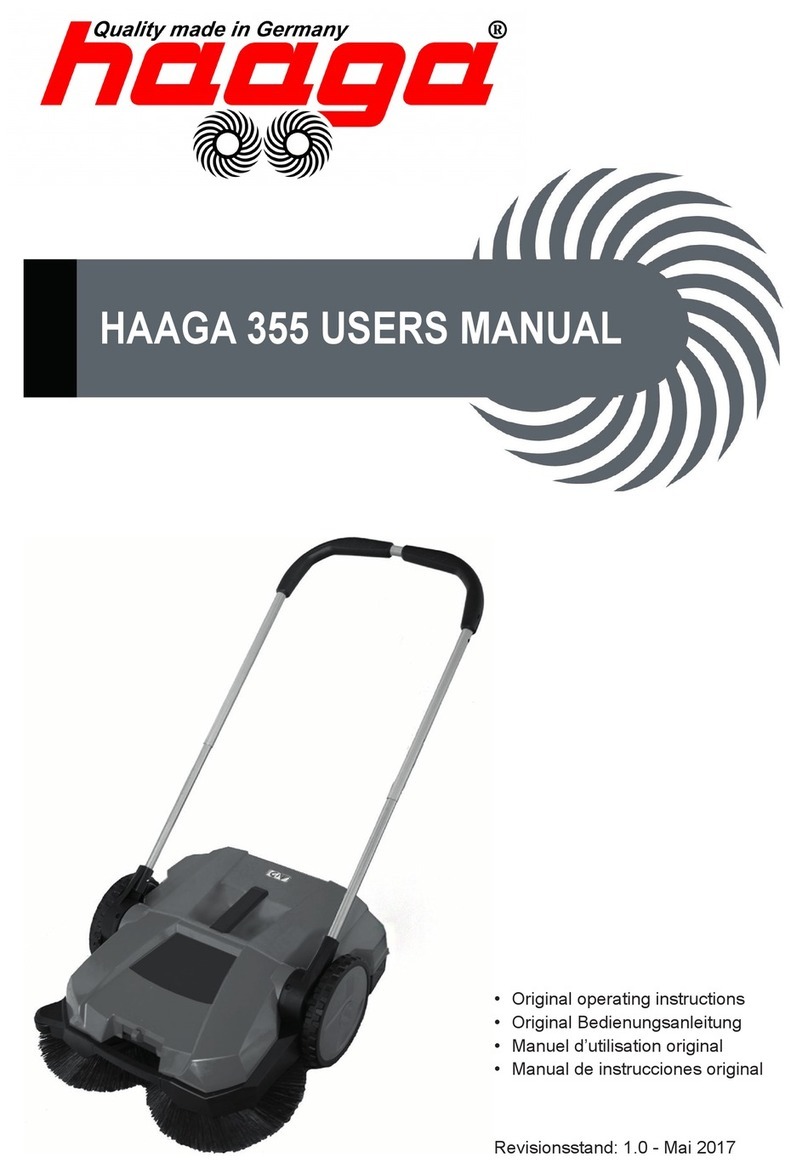Assembly procedures
WARNING
Make sure the engine is turned off/stopped and not hot before
assembly.
NOTE ; Safety future
If you try to open the dust cover (5) when engine is running, it will
automatically stop the engine. (Fig.3)
But never try to open the dust cover (5) when engine is running
even with this future, otherwise serious personal injury may occur.
1. Blower assembly
Blow pipes to main body (Fig. 1)
Inspect the main body and accessories.
Connect straight pipe (1) and other pipe(s) securely. (See page 1 )
Align groove (2) in straight pipe with projection (3) on blower
housing (or another pipe) and slide the pipe onto the blower
housing (or another pipe).
Rotate the pipe clockwise to lock it into place.
Fan headed pipe to straight pipe (Fig. 2)
• Align groove (2) on the fan headed pipe (4) and projection (3) on
2nd straight pipe (1) and rotate the fan head in place.
2. Vacuum assembly
Vacuum pipe to main body (Fig. 5)
• Loosen knob bolt (5). (Fig. 3)
• Align the arrow(11) on the vacuum pipe (10) and the arrow (8) on
the fan case (7) as shown Fig. 4. (Fig. 4, 5)
• Slide( ①) the vacuum pipe into the fan case, and then rotate( ②)
the vacuum pipe clockwise(9) as shown Fig. 4 until it clicks.(Fig. 4)
Bent pipe and dust bag to main body
• Connect bent pipe (12), Align groove (13) in bent pipe with
projection (3) on blower housing and slide the pipe onto the
blower housing. Rotate the pipe clockwise to lock it into place.
(Fig. 7)
• Connect the dust bag to the installed bent pipe by inserting the
thinner part of the pipe into the opening of the bag. Fasten the
adjuster (14) securely by taping the end of the sawn strap. (Fig. 8)
WARNING
Always connect dust bag (16) to bent pipe (12).
Never try to connect directly to main body (15), otherwise dust bag
might approach near exhaust of mufer and it might cause res or
injuries. (Fig. 9)
Operating procedures
Fuel (Fig. 10)
WARNING
• This unit is equipped with a two-stroke engine. Always run
the engine on fuel, which is mixed with oil. Provide good
ventilation, when fueling or handling fuel.
• Fuel contains highly ammable and it is possible to get the
serious personal injury when inhaling or spilling on your body.
Always pay attention when handling fuel. Always have good
ventilation when handling fuel inside building.
Fuel
• Always use branded 89 octane unleaded gasoline.
• Use genuine two-cycle oil or use a mix between 25:1 to 50:1,
please consult the oil bottle for the ratio or Hitachi Authorized
Service Centers.
• Only for the state of California at 50:1.
• If genuine oil is not available, use an anti-oxidant added quality
oil expressly labeled for air-cooled 2-cycle engine use (JASO FC
GRADE OIL or ISO EGC GRADE). Do not use BIA or TCW (2-stroke
water-cooling type) mixed oil.
• Never use multi-grade oil (10 W/30) or waste oil.
• Always mix fuel and oil in a separate clean container.
Always start by lling half the amount of fuel, which is to be used.
Then add the whole amount of oil. Mix (shake) the fuel mixture.
Add the remaining amount of fuel.
Mix (shake) the fuel-mix thoroughly before lling the fuel tank.
Fueling
WARNING
• Always shut off the engine and let it cool for a few minutes
before refueling.
• Slowly open the fuel tank, when lling up with fuel, so that
possible over-pressure disappears.
• Tighten the fuel cap carefully, after fueling.
• Always move the unit at least 3 m (10 ft.) from the fueling area
before starting.
• Do not smoke and/or allow ames or sparks near fuel when
handling or lling fuel.
•
Always wash any spilled fuel from clothing immediately with soap.
• Be sure to check for any fuel leaking after refueling.
Before fueling, clean the tank cap area carefully, to ensure that
no dirt falls into the tank. Make sure that the fuel is well mixed by
shaking the container, before fueling.
Starting the cold engine
CAUTION
Do not start if the pipe and dust cover are obstructed by the ground
or any other object.
1. Set ignition switch (17) to ON position. (Fig. 11)
*Push priming bulb (18) several times so that fuel ows through
the bulb or return pipe. (19) (Fig. 12)
2. Set choke lever to CLOSED position. (Fig. 13)
3. Pull recoil starter briskly, taking care to keep the handle in your
grasp and not allowing it to snap back. (Fig. 14)
4. When you hear the engine want to start, return choke lever to
RUN position (open). Then pull recoil starter briskly again.
WARNING
•
Never start or run the engine inside a closed room or building and/
or near the inammable liquid. Breathing exhaust fumes can kill.
•
Do not allow the rope to snap back in and always hold the unit rmly.
NOTE
If engine does not start, repeat procedures from 2 to 4.
5. After starting engine, allow the engine about 2-3 minutes to
warm up before subjecting it to any load.
Starting the warm engine
Use only 1 and 3 of the starting procedure for cold engine.
If the engine dose not start, use the same starting procedure
as for a cold engine.
Operating blower (Fig. 15)
• A low speed should be used to blow leaves and dry grass.
• A medium speed should be used to clean wet leaves and grass.
• A high speed should be used when moving gravel, dirt or other
heavy materials.
WARNING
• Do not direct discharge of air toward people or pet.
• The unit should be operated in a well ventilated area.
• Never perform assembly or disassembly procedures with
engine running or serious personal injury may result.
• Never touch mufer, spark plug, or other metallic parts while
engine is in running or immediately after shutting off engine.
CAUTION
This blower has been designed and adjusted to be used with all
blowing pipes attached (See page 1). It must never be operated
without the straight pipe, and fan headed pipe.
Operating vacuum (Fig. 16)
WARNING
Do not vacuum bottles, cans or any other hard materials, which
may cause damage or serious injuries.
• Do not use a bag with holes or tears in it. Even a small hole can
cause a lot of dust to come out. Repair or replace it immediately.
• Make sure zipper of the bag is completely closed.
• Wear shoulder strap over right or left shoulder.
• Make sure bevel at end of suction pipe faces downward.
• The unit should be operated In a well ventilated area.
• Use rakes and brooms to loosen debris before vacuuming.
•
A low speed should be used to vacuum small leaves and dry grass.
•
A medium speed should be used to vacuum large leaves and grass.
•
A high speed should be used to vacuum larger or wet leaves and grass.
• Dispose of debris in the bag more frequently in dusty condition.
NOTE
When you hear or feel strange sound or vibration, stop engine
immediately and check if anything blocks fans or pipes, If so,
remove it and check for damage.
Stopping (Fig. 17)
Decrease engine speed and run at an idle for a few minutes, then
turn off ignition switch.
NOTE
If the engine dose not stop, it can be forced to stop by setting
the choke lever to CLOSED position.
Before restarting the engine, ask Hitachi Authorized Service Centers
for repairs.
